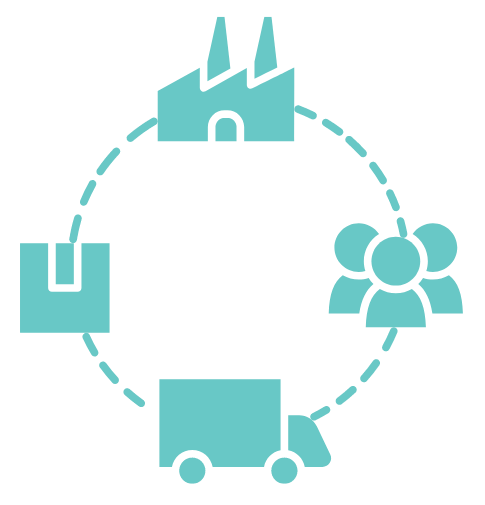Harmonizing Circular Economy and Eco-Smart Manufacturing for a Holistic Sustainable Future by Michael Baumann
In today’s world, the call for sustainability is louder than ever, and the stakes are high. The circular economy, with its transformative approach to production and consumption, has emerged as a robust answer to the crisis of resource depletion, environmental degradation, and economic inefficiency. Simultaneously, the advent of Industry 4.0 technologies has paved the way for Eco-Smart Manufacturing, focusing on sustainability as much as efficiency. This article dives deep into why Circular Economy and Eco-Smart Manufacturing must go hand-in-hand, emphasizing the importance of holistic management, and why this transformation requires not just expertise but also impassioned leadership.
 The Imperative of a Circular Economy
The Imperative of a Circular Economy
A circular economy shifts away from the traditional ‘take, make, dispose’ model, instead promoting a loop where materials are reused, recycled, and regenerated. This approach comes with an array of benefits:
- Environmental Sustainability: Efficient resource utilization and a lower carbon footprint.
- Economic Advantages: Cost savings through innovative business models and product longevity.
- Innovation and Competitiveness: New technologies and differentiation in the marketplace.
- Social Benefits: Job creation and enhanced public health.
- Regulatory Drivers: Global policies that incentivize circular practices.
However, transitioning to a circular model involves overcoming challenges such as initial costs and complex supply chains.
 The Rise of Eco-Smart Manufacturing
The Rise of Eco-Smart Manufacturing
Enter Industry 4.0—a technological revolution defined by smart factories, IoT, and cloud computing. Underlying this transition is the goal of environmental sustainability.
- Digital Twins for Sustainability: Digital twins enable real-time monitoring and predictive analytics, facilitating optimal resource utilization and waste reduction.
- IoT Sensors: These tools provide invaluable data for waste-reducing strategies.
- AI in Material Science: AI algorithms are critical in crafting biodegradable solutions, fundamentally changing our approach to materials.
Case Study: The Power of Digital Twins
Stora Enso’s Veitsiluoto paper mill is a great example of how digital twin models can be used to improve energy efficiency and reduce carbon emissions. The mill used a digital twin model to monitor its energy consumption and identify areas where it could save energy. As a result, the mill was able to reduce its energy consumption by 8%, which also reduced its carbon footprint by 8%.
Explore the full Case Study here.
The Symbiotic Relationship
The circular economy and eco-smart manufacturing are two sides of the same sustainability coin. While the circular economy sets the vision, eco-smart manufacturing provides the technological tools to make that vision a reality. This integration is crucial for companies and policymakers who aim for a sustainable shift from a linear to a circular model, emphasizing the need for holistic management.
 Leadership: The Make-or-Break Factor
Leadership: The Make-or-Break Factor
Technology and guidelines can only go so far; effective leadership is essential. Leaders need to have a deep-rooted understanding of both the circular economy and eco-smart manufacturing. More than that, they must possess the passion and commitment to guide their organizations through this paradigm shift with a holistic approach to management.
Conclusion
It’s not just about efficiencies or profit margins; it’s about constructing a sustainable future where technology serves as a catalyst for environmental stewardship. By merging the principles of a circular economy with the technological solutions offered by eco-smart manufacturing, we’re not just optimizing—we’re redefining the essence of production for the betterment of all.
In this journey towards a sustainable future, leaders play a pivotal role. The right blend of knowledge and passion, along with a commitment to holistic management, can drive meaningful changes, shaping an ecosystem where circular economy and eco-smart manufacturing converge to create a sustainable and prosperous tomorrow.
In the quest for a sustainable future, visionary leaders are at the center. A harmonious fusion of expertise, unwavering passion, and a commitment to holistic management provides the catalyst for transformative change. At H.I.E.C, we are ready and experienced to recruit leaders for such change, leveraging our skills in planning for the digital future and selecting world-class talent. Together, we can shape a thriving ecosystem where the circular economy and ecologically smart manufacturing come together to pave a path to lasting sustainability and prosperity.

Author: Michael Baumann
Please feel free to contact Michael Baumann directly via email mbaumann@hiec.com should you have any questions or would like to discuss the above or anything else further.